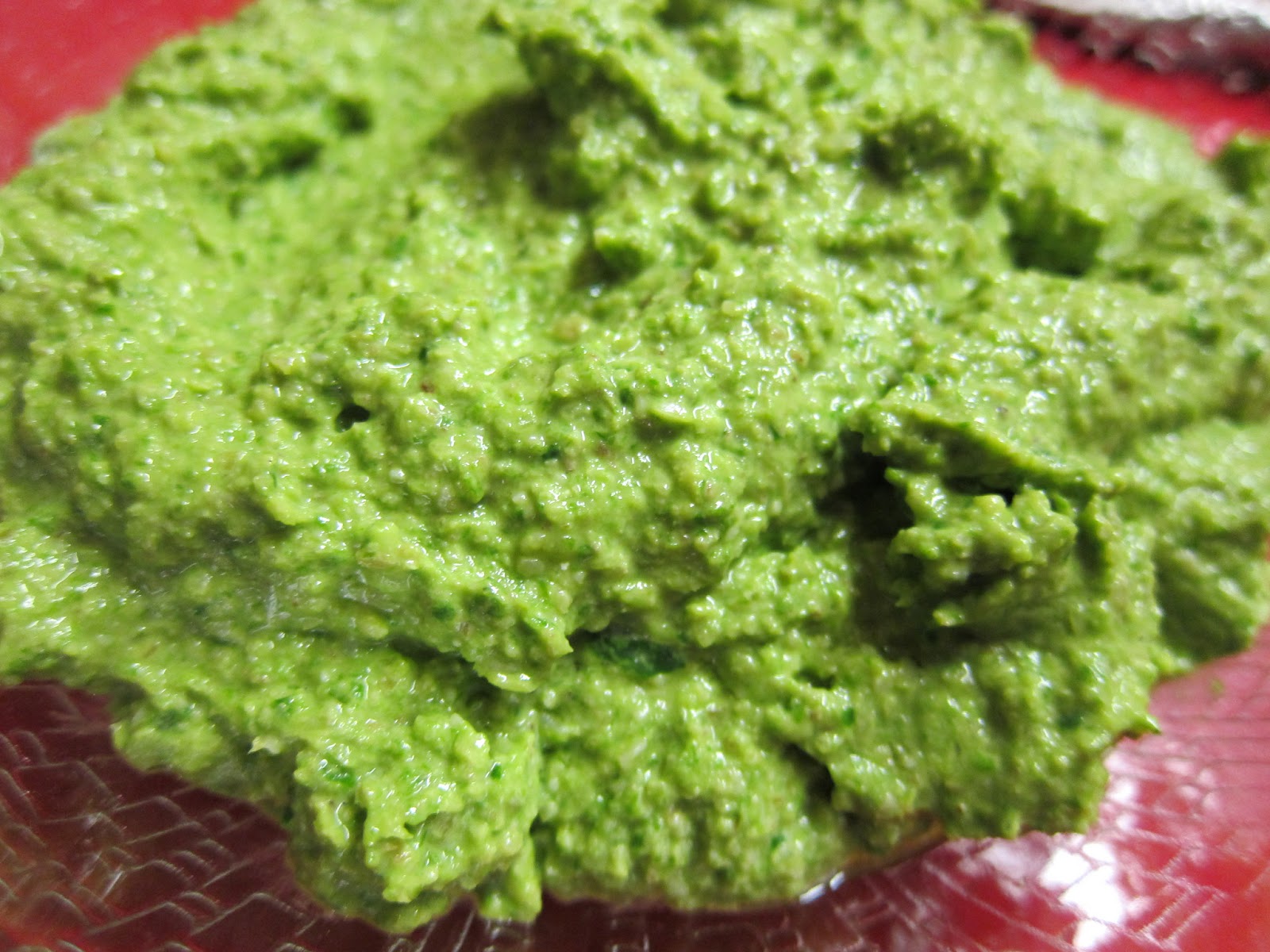If you've ever forgotten to cook a bulb of garlic and noticed the green stem sprouting from the cloves, then you've seen a garlic scape in its earliest stage. If planted and left to grow, the scape will collect air and sunshine to help the garlic plant grow. As the plant matures, the scape will curl as it grows to produce a flowering bulb. Garlic farmers frequently cut the curly flowering stems in order to promote growth of the underground garlic bulb. Tender and milder in flavor than garlic cloves, garlic scapes can be enjoyed raw or cooked.
 |
| Terrible iPhone photo of scapes at the farmers' market |
The lovely coworker who supplies me with real free-range eggs (another post for later) brought me some scapes from her upstate garden last week. It’s only a few pieces, but I already have big plans for them. I like to chop several scapes into 1-inch pieces to get about 1 1/2 -2 cups worth, saute them in some olive or canola oil, then toss with pasta, parmesan cheese, and pepper. Save some of the pasta cooking water to create a bit of a sauce. Another classic use for scapes is pesto: in a food processor, blend 1 cup coarsley chopped raw scapes with 1/4 cup nuts (walnuts, pine nuts, etc.) until smooth and combined. With motor running, slowly drizzle in extra virgin olive oil to thicken to taste (start with 1/2 cup). When it's the consistency you like, turn off the processor, stir in 1/4 grated parmesan or romano cheese and salt and pepper to taste. Other people swear by grilling them, although I seem to lose most of mine through the grates. Have you tried scapes? How do you use them?








